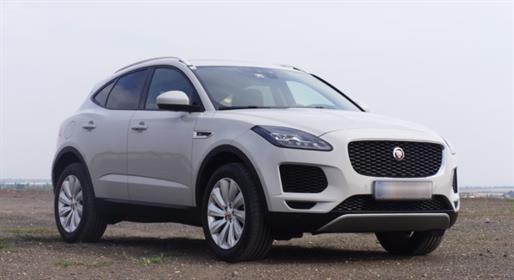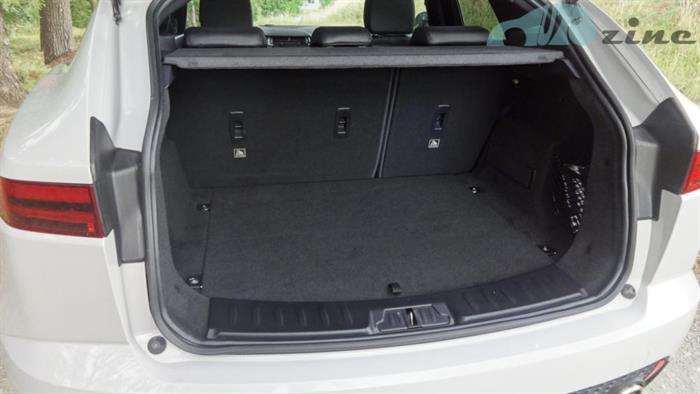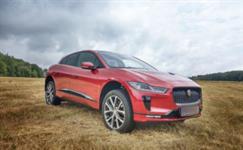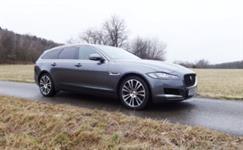Jaguar is another brand that succumbed to the trend of the popularity of small compact SUVs and last year officially presented us with its representative of this category, presenting us with the new Jaguar E-Pace.
This predominantly urban crossover, which among other things shares the same underpinnings with the Range Rover Evoque , has currently been given our editorial test. The tested E-Pace was equipped with a turbocharged two-liter diesel with four-wheel drive and a nine-speed automatic transmission.
The car company Jaguar applies an approach of a certain similarity of individual models to the external appearance of its cars, which as a result makes its cars quite clearly legible and easily recognizable. The same principle was applied to the currently tested model.
The E-pace is therefore the younger and smaller sibling of the Jaguar F-Pace , its sibling genes are quite evident on it, mainly in the concept of its rear part. The rear lamps of both cars are almost identical, the "F-Pace lamps" only have a slight rounding in the place of the fifth door (after the F-Type model for a change). Within the front part, the change is more pronounced, the E-Pace does not have those horizontal, slightly cloudy XF lights here. The expression of its front part is much friendlier, calmer, following the pattern of the F-Type model. The side profile of the car depends on the wheelbase itself, while maintaining the massiveness of its sibling, the E-Pace, in my opinion, has a slightly less elegant impression than the aforementioned F-Pace. However, the external impression of the car is still pleasant and balanced. Its robustness is most evident in its side profile. The low silhouette of the side windows in its lower part smoothly transitions into the glazing of the fifth door, creating clean and elegant lines.
The specific, tested model honestly did not excite me with its color design. In it, the E-Pace seemed unnecessarily austere and bland.
The interior of the tested car was completely black, with only a slight revival around the air conditioning vents, the automatic transmission selector and the shield of the instrument panel in front of the driver. Of course, Jaguar can liven up the interior with various color combinations, and I would certainly advocate for this choice when specifying it. This could achieve a certain softening of the bulkiness of the dashboard. However, this refinement is partly due to the elegant "linking" of the upper part of the instrument panel with the middle part of the dashboard, from where this element effectively runs along the dashboard to the automatic transmission selector itself. The layout of the controls themselves within the dashboard is traditionally well-arranged and intuitive.
The central part of the dashboard is dominated by a 10-inch wide display of the Touch Pro on-board infotainment system, below it are the circular air conditioning controls, which also control the heating of the front seats. The instrument panel in front of the driver was equipped with a large digital 12.3-inch interactive display, within which you can choose different graphics for displaying individual alarm clocks. Usually it is a display of the speedometer and tachometer, then the data from the menu is displayed in the third, middle position. Another option for display on this display is the navigation map itself.
The central tunnel is equipped with a classic automatic transmission controller, unfortunately the controller is not the circular, retractable and rotating one. This is an ordinary version of the automatic transmission selector with the option of switching to sports or manual gearshift mode. Next to the automatic transmission selector, there is also a discreet drive mode selector.
A leather-covered, multifunctional steering wheel is also a matter of course, through which you navigate the menu of the display in the instrument panel, control the phone or the cruise control. Unfortunately, the operation of the individual buttons on the steering wheel is a classic Jaguar, i.e. long and with a relatively large resistance.
At first glance, the E-Pace looks robust, but its belonging to a compact SUV and a certain handsome cut are most noticeable in the interior, especially in the rear seats, where there really isn't much room to spare. On the other hand, the question is which of its future owners will be bothered by this.
The luggage compartment of the E-Pace has a basic volume of 577 liters in addition with the possibility of opening the fifth door by waving your foot under the rear bumper. In addition, the E-Pace model can be purchased with a waterproof bracelet that replaces the key.
The Jaguar E-Pace comes with a relatively wide range of engines, offering two petrol and three diesel engines. Petrol engines are available with outputs of 183 and 221 kW. The most powerful diesel engine will offer you two turbos and a power of 177kW, the weakest then a power of 110kW and drive only the front axle.
We tested the "golden" middle ground, namely the 132kW diesel engine in conjunction with a nine-speed manual transmission. The driving performance of the tested car seemed slightly awkward at times. However, given the car's construction and weight, it is necessary to praise its behavior in corners, in which you are very sure of the E-Pace, in addition, it can also be very comfortable. Unfortunately, less certainty abounded in the tested drive unit, 132 kW is definitely not enough, but the E-Pace is no small thing, so I would probably choose a more powerful engine. On the other hand, it must be said that the consumption of the tested engine was around a respectable 7.1 liters of diesel during the editorial week.
The basic Jaguar E-Pace starts at a price tag of CZK 966,669 including VAT, in the version with a two-liter turbodiesel engine, manual transmission and front-wheel drive.
Jaguar E-Pace will be a certain style model in the given segment, and those who decide for it will aim for a certain originality, pleasant appearance and good driving characteristics.







































